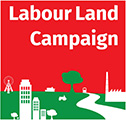LVT can help finance public transport and other public services

- The value of land is partly determined by its proximity to public transport facilities and other public services and amenities, such as parks, schools and health centres, provided from the public purse – in other words, taxpayers. Whenever a new public service is introduced to an area, or an existing one upgraded, this increases land values in the vicinity, thus benefiting owners of land in the area, at the expense of taxpayers. With LVT in place, the public at large would get back a major share of the increased value, so that, in effect, the project could become self-financing.
- Indeed, with LVT, it would be possible to finance such projects in advance through the issue of bonds backed by the future additional revenue stream from LVT that would result from the increased value of land in their vicinity.
- For example, the London Underground Jubilee Line extension, which cost taxpayers £3.5 billion, could have been financed in this way. At the time, it was estimated that as a result of the extension, land values in the vicinity of just two of the stations, Canary Wharf and Southwark, increased by £2.8 billion, and, over the whole extension, by some £13 billion. In other words, had LVT already been established, the public as a whole would have been the beneficiaries from the higher land values created, instead of the private owners of land in those areas, who had contributed nothing to the project.
Read more of our ‘Manifesto’:
Introduction
Fair
A green tax
Transport
Housing
Farming
The difference
Clear and simple
Implementing
